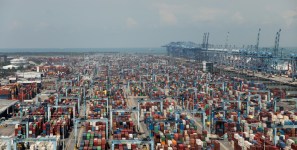Is It Time to Reignite North American Manufacturing?
For the last four decades, manufacturing jobs have left North America. While this has led to lower prices for consumer goods, the supply chain issues laid bare over the last two years have demonstrated the unwritten costs inherent in this shift to foreign imports. Thousands of container ships are stranded in the Pacific Ocean, and many factories overseas are months (or even years) behind schedule. As a result, the cost of items has risen sharply for industries ranging from retail to automotive to construction, and caused brands to focus on how to reintroduce manufacturing to North America on a wider scale.
The Plot of Every Springsteen Song
Manufacturing jobs have been leaving North America since the 1970s, partly due to the perception that the industry has changed in ways North American workers wouldn’t like. But this is largely untrue — manufacturing jobs pay higher wages than comparable “blue collar” positions, and many come with benefits. Before the labor exodus, manufacturing jobs could support whole towns through a middle-class lifestyle. Showing the benefits of these rewarding industrial positions is North America’s best bet to reinvigorate the working middle class that fuels our consumer economy, while helping North American workers learn key technical skills for the new job market. But to do so, we’ll have to change those mistaken perceptions.
The Smart (Factory) Advantage
Cutting-edge technology can give North American manufacturing the edge it needs to compete with inarguably cheaper services overseas. We are in the midst of the “Fourth Industrial Revolution” wherein the manufacturing sector integrates ideas like artificial intelligence, the Internet of Things, and Smart Factories. This increased use of machine learning and automation means the sorts of factories we can build in North America will be more productive than those overseas, while giving employees new opportunities to learn and grow. Those employees will be required more to maintain and program the machines than to assemble stock by hand, and the training they receive will also make for a more agile working class on the continent.
Potholes and Speed Bumps
Of course there will be challenges in reinvigorating North American manufacturing. Modern products, especially the electronics so central to our lives, require worker specialization. Even if a smart factory is automating every step, workers must know exactly what those steps are and how to ensure they’re being automated correctly. This advanced training is part of the overall cost of “scaling up” but in the end serve to illustrate the importance of manufacturing and the careers available for those who embrace the learning and development available in the industry.
And speaking of supply, the manufacturing exodus has caused continental supply chains to atrophy, and these will need to be redeveloped to make delivery from North American factories to North American stores as fast as it is to those same stores from foreign factories. With today’s major trucker shortage, that rehabilitation is easier said than done.
Embracing Challenges
Many North American companies should seriously consider taking these hard but necessary steps to bring their manufacturing efforts back in-house. Not only would the investment pay off in greater independence and control over stock, but also reinvigorate industrial employment sectors in supply chains and manufacturing. While the current status quo is efficient when everything is going right, the past few years have proven how fast everything can go wrong. In those situations, the advantage lies with companies that can provide their own supply of goods and recruit and retain workers who have intimate knowledge of the products and processes.
_________________________________________________________
Carl Schweihs is President and Chief Operating Officer of PeopleManagement, TrueBlue’s workforce management division specializing in onsite and contingent workforces. He leads three staffing businesses – Centerline Drivers, SIMOS Solutions and Staff Management | SMX, combining innovative, technology-based solutions with workforce strategy to help bridge talent gaps and prepare tomorrow’s supply chain talent for the future.






Leave a Reply